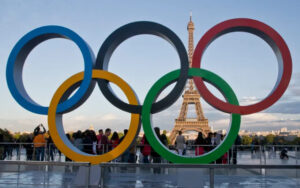
For decades now, the Olympic fortnight has been the time when India’s athletes and those from sports other than cricket step out of a giant shadow. The headlines are then about Abhinav Bindra, PV Sindhu and Neeraj Chopra, rather than Sachin Tendulkar, Virat Kohli and Rohit Sharma. But from Los Angeles 2028, even that ‘safe space’ free from cricket will be taken away.
The jury will always be out on whether sports like football, cricket and golf should even be at the Olympics. By definition, an Olympic gold should be the pinnacle of your sport. It will never be that in football, where the Olympic (men’s) competition is largely played by Under-23s, or golf, where the Claret Jug at the British Open and the Green Jacket from the US Masters in Augusta are as good as it gets. Would a tennis player exchange a Grand Slam title for Olympic gold? Probably only if you’ve won as many as Novak Djokovic or Rafael Nadal.
Cricket is in the same boat. The World Cup may be less than 50 years old, but it’s the trophy that was lifted by the likes of Clive Lloyd, Vivian Richards, Kapil Dev, Tendulkar and Ricky Ponting. For a younger generation, the Twenty20 version, first held aloft by MS Dhoni in 2007, is the Holy Grail. But because of the relative lack of [big-tournament] history, cricket at the Olympics could well become one of the most coveted medals.
It certainly will be for India in four years’ time. After all the hype that accompanied the contingent to Paris, a return of one silver and five bronzes – subject to what happens with the Vinesh Phogat appeal to the Court of Arbitration for Sport (CAS) – was underwhelming. The prospect of two additional medals in LA is certainly alluring.
The good news for non-cricket athletes from India is that Kohli and Rohit have retired from the T20 format. By 2028, they will presumably have left the game altogether. Apart from a selfie opportunity lost, the contingent that goes to LA will not need to worry about having their thunder stolen by these titans.
But such is the star culture in Indian cricket that a Shubman Gill, Yashasvi Jaiswal or even someone unknown right now could be just as big an attraction by 2028. After all, at the time of Athens 2004, few Indians had heard of Dhoni. By Beijing 2008, his smile was looking down on you from every billboard.
And then, there are the women. Mithali Raj has retired, and LA may be a step too far for Harmanpreet Kaur, but a new generation led by Jemimah Rodrigues and Shafali Verma is primed to take over. India may lag behind Australia and England at present, but by 2028, a new-look squad will have played four more Women’s Premier League (WPL) seasons and tasted a couple more World Cups. They too will be ready, with stars in their midst.
In other news:
A big day for Indian sports! Will Vinesh Phogat win a medal and help India match its Tokyo Olympics medal tally, or will the verdict go the other way?@TrishaGhosal & @RohanDC98 with more updates from #Paris.@TataSteelLtd @Phogat_Vinesh @WeAreTeamIndia #VineshPhogat… pic.twitter.com/qFSBSQqKwZ
— RevSportz Global (@RevSportzGlobal) August 13, 2024
Sindhu is unlikely to be in LA. Mirabai Chanu probably won’t be either. Vinesh will be 33 by then. Neeraj will be on the threshold of his fourth decade. With more than 30 international cricketers in the fray – men and women, depending on squad sizes – will the other athletes even get the same level of attention? Would someone like PR Sreejesh have been feted as much if Kohli had played and won a medal in Paris?
The answer lies with the media. Cricket’s place as India’s premier sport is in no immediate danger, but it’s on the mainstream media to ensure that others are not treated as a four-yearly distraction. We can’t be talking of ‘technical superiority’ and ‘inner 10s’ and upper cuts only in Olympic years. If a frankly embarrassing medal tally is to improve, India really has to learn to see beyond cricket.
For more sports content: https://revsportz.in/